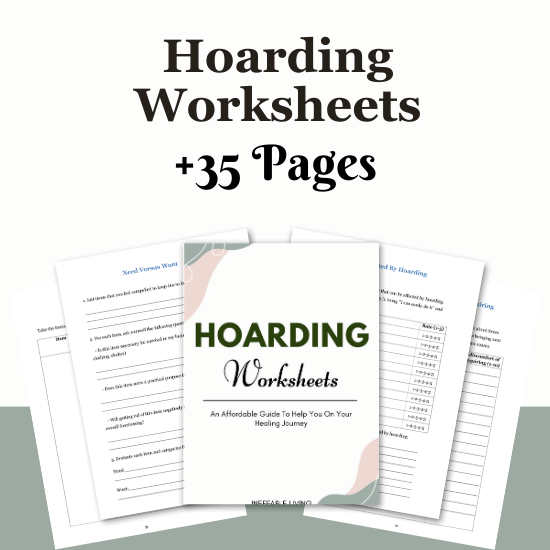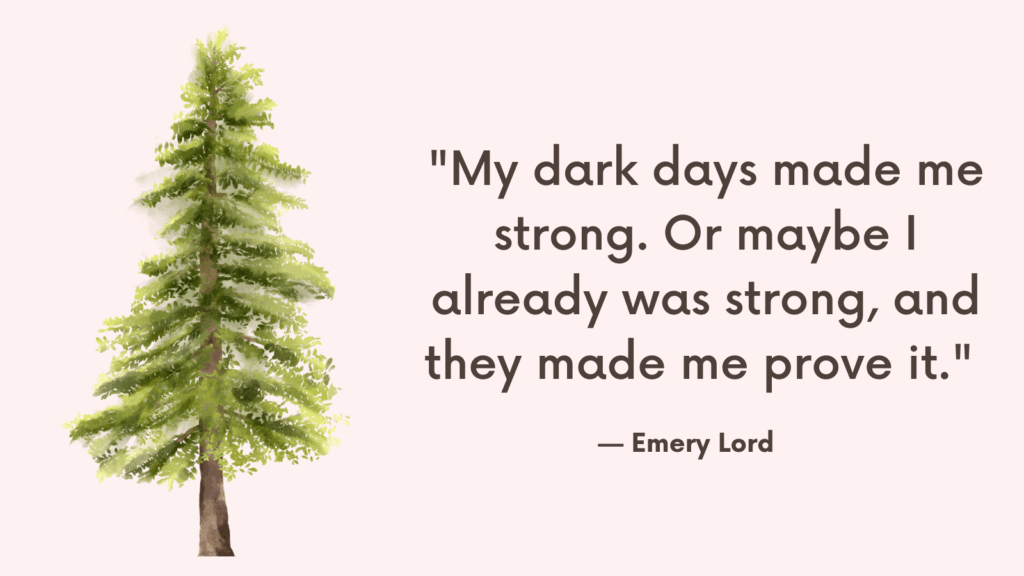In this post, you’re going to learn all about hoarding and its stages.
What Is Hoarding?
Hoarding is characterized by persistent difficulty discarding or parting with possessions, regardless of their actual value.
This difficulty leads to the accumulation of a large number of items, often resulting in cluttered living spaces that significantly impede functionality and safety.
Individuals who hoard typically experience intense emotional attachments to their possessions and exhibit distress or anxiety when faced with the prospect of discarding items.
The behavior of hoarding can vary in severity, ranging from mild clutter to extreme accumulation that compromises living conditions.
Hoarding is recognized as a distinct mental health condition and is categorized within the obsessive-compulsive and related disorders in the Diagnostic and Statistical Manual of Mental Disorders (DSM-5).
It’s important to note that hoarding is not simply a matter of excessive messiness or being disorganized.
Instead, it is a complex manifestation of underlying psychological factors, including attachment issues, emotional distress, and cognitive patterns that influence an individual’s relationship with possessions.
Signs of Hoarding Disorder
Some common signs of hoarding disorder include:
1. Difficulty Discarding: Individuals with hoarding disorder often have significant distress associated with discarding items, leading to an accumulation of possessions that clutter living spaces.
2. Excessive Acquisition: Hoarding may involve compulsive acquisition of items, including those that may not have practical value or are no longer needed.
3. Cluttered Living Spaces: The home or living environment may become excessively cluttered to the extent that it interferes with the intended use of the space.
4. Distress or Impairment: Hoarding behaviors can lead to significant distress or impairment in functioning, impacting daily activities, relationships, and overall well-being.
5. Health and Safety Risks: Hoarding can pose health and safety risks, including fire hazards, sanitation issues, and increased risk of falls or accidents within the living environment.
Related: What Causes OCD to Flare Up? Top 10 Causes
Stages of Hoarding
Hoarding is a multifaceted issue that often develops gradually over time, influenced by various psychological, emotional, and environmental factors. Here are the recognized stages of hoarding and their associated characteristics:
1. Acquisition
The initial stage of hoarding often involves an increased propensity to acquire items.
Individuals may begin accumulating possessions at a higher rate than usual, leading to a growing collection of items that may or may not have practical value.
Acquisitions can range from sentimental objects to seemingly random or miscellaneous items.
2. Clutter
As the accumulation of possessions continues, the living spaces of individuals in the early stages of hoarding begin to exhibit noticeable clutter.
Piles of items, disorganization, and difficulty in maintaining tidiness become apparent.
Despite the presence of clutter, individuals may not perceive it as problematic or may struggle to make decisions about discarding items.
3. Excessive Accumulation
This stage is characterized by a significant increase in the volume of possessions within the living environment.
Spaces intended for everyday activities, such as bedrooms, kitchens, and living rooms, become increasingly overwhelmed by accumulated items.
Walkways may be obstructed, and surfaces may be covered with belongings, impeding functionality and creating safety hazards.
4. Social Isolation and Impairment
Hoarding behavior often leads to social isolation and impairment in various areas of life.
Individuals may withdraw from social interactions due to embarrassment or shame about the clutter in their living spaces.
Furthermore, functional impairment may become evident as hoarding interferes with daily activities such as cooking, bathing, and sleeping.
Related: Top 10 Social Withdrawal Signs — & How To Social Isolation? (Hikikomori Syndrome)
5. Emotional Distress and Attachments
As hoarding progresses, individuals often experience heightened emotional distress related to their possessions.
Anxiety, depression, and feelings of overwhelm may become prominent.
Additionally, strong emotional attachments to items, regardless of their practical utility, can develop, making it challenging for individuals to part with belongings.
6. Decline in Quality of Life
The impact of hoarding on overall quality of life becomes increasingly pronounced in this stage.
Individuals may struggle with financial strain, compromised physical health due to unsanitary living conditions, and strained relationships with family members and friends.
The clutter and disorganization contribute to a diminished sense of well-being and functionality.
7. Resistance to Discarding
At this advanced stage, individuals often experience significant difficulty in discarding possessions, even those with minimal or no practical value.
A pervasive fear of needing discarded items in the future, coupled with intense emotional attachments, fuels strong resistance to decluttering efforts.
This resistance can hinder attempts to address the clutter and create a barrier to seeking assistance.
8. Compromised Living Conditions
The culmination of hoarding behavior often results in severely compromised living conditions.
Safety hazards, sanitation issues, and structural damage to living spaces may occur due to the excessive accumulation of items.
The functionality of the home is severely impaired, posing significant risks to the well-being of the individual and others living in the environment.
Related: How To Step Out Of Denial? Top 10 Steps To Overcome Denial When The Truth Is Heartbreaking
How to Let Go of Hoarding and Live Clutter-Free?
1. Understanding the Root Causes
It’s crucial to recognize that hoarding behavior often has deep-rooted psychological origins.
Exploring the underlying emotional factors contributing to hoarding, such as anxiety, attachment to possessions, or past experiences, can provide valuable insights.
2. Developing Awareness
Cultivating self-awareness about hoarding tendencies is an essential first step.
By recognizing the impact of hoarding on daily life, relationships, and emotional well-being, individuals can begin to acknowledge the need for change.
Mindfulness practices, such as meditation and self-reflection, can help increase awareness of impulsive acquisition and difficulty discarding possessions.
3. Challenging Beliefs About Possessions
Hoarding is often fueled by strong beliefs about the value and significance of possessions.
Cognitive-behavioral therapy (CBT) techniques can assist in challenging these beliefs and developing a more balanced perspective on the role of material items in one’s life.
Identifying and addressing unhelpful thought patterns related to acquiring and keeping possessions is a fundamental aspect of this process.
Related: Negative Core Beliefs List (& 8 Tips On How To Challenge Them)
4. Setting Realistic Goals
Establishing achievable goals for decluttering and organizing living spaces is crucial.
Breaking down the task into manageable steps can prevent individuals from feeling overwhelmed.
Setting specific, time-bound objectives, such as clearing a designated area or sorting through a specific category of items, can provide a structured approach to reducing clutter.
5. Practicing Decision-Making Skills
Hoarding often involves difficulty in making decisions about discarding possessions.
Enhancing decision-making abilities through gradual exposure to discarding items can be beneficial.
Engaging in exercises that involve categorizing possessions based on their utility and sentimental value can help individuals develop more effective decision-making skills.
6. Utilizing Organizational Strategies
Implementing practical organizational strategies can aid in maintaining clutter-free environments.
This may include utilizing storage solutions, labeling systems, and establishing routines for regular tidying and decluttering.
Creating designated spaces for specific categories of items can also contribute to a more organized living environment.
7. Addressing Emotional Attachments
Many hoarders experience strong emotional attachments to their possessions.
Exploring the underlying emotions associated with specific items and gradually detaching from them can be a gradual yet essential process.
Engaging in therapeutic interventions, such as emotion-focused therapy, can assist individuals in managing these emotional attachments.
Related: Best 7 Books On Detachment
8. Building Adaptive Coping Skills
Developing alternative coping mechanisms to replace hoarding behaviors is critical.
Encouraging engagement in healthy, fulfilling activities, such as hobbies, social interactions, and self-care practices, can provide constructive outlets for managing emotional distress and reducing the reliance on material possessions for comfort.
9. Maintaining Progress
Sustaining progress after decluttering efforts is essential for long-term success.
Developing strategies to prevent relapse, such as regular maintenance of organized spaces, ongoing therapy or support group participation, and continuous self-monitoring, can help individuals maintain a clutter-free lifestyle.

Conclusion
It’s important to approach the journey toward living clutter-free with patience, self-compassion, and a willingness to seek professional guidance when necessary.


